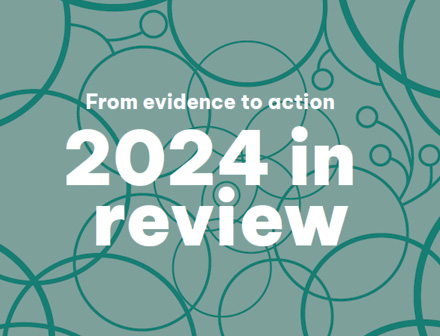This website uses cookies so that we can provide you with the best user experience possible. Cookie information is stored in your browser and performs functions such as recognising you when you return to our website and helping our team to understand which sections of the website you find most interesting and useful.
With insights from Network member Yeon Wook Kim, we look at the key steps taken to implement the national screening programme for lung cancer in South Korea.
Building a commitment to lung cancer screening in South Korea
In 2015, lung cancer screening in South Korea took a significant step forward when a multi-society collective developed comprehensive guidelines for lung cancer screening. These guidelines recommended annual low-dose computed tomography (LDCT) screening for high-risk individuals.1

Figure 1. Categories that were used in K-LUCAS to evaluate the feasibility of implementing a national screening programme for lung cancer (Source: Lee J, Kim Y, Kim HY, et al. 2021. Tranl Lung Cancer Res 10(2): 723-36)
Following this, the government funded the Korean Lung Cancer Screening Project (K-LUCAS), which ran in 2017 and 2018 to evaluate the feasibility of implementing a national screening programme for lung cancer. The study looked at five key areas: eligibility, screening efficiency, current infrastructure, reducing harm, and reliability of quality control system (Figure 1).2 Conducted by the Ministry of Health and Welfare in collaboration with major medical societies, K-LUCAS was implemented across 14 hospitals (including the National Cancer Center), 7 regional cancer centres and 3 university hospitals.3
The study included an advertisement campaign that provided information on the benefits and harms of lung cancer screening. Campaign materials were circulated in hospitals, newspapers, bus stations and subways;4 this helped to increase the participation rate in the study.2
K-LUCAS also used a network-based diagnosis support system that incorporated computer-aided detection of lung nodules.5 The system helped with quality control and reduced scan reading times for specialists, enhancing the efficiency and efficacy of radiology evaluations.5
Approximately 13,700 people underwent screening as part of K-LUCAS, with 90 people (0.66%) diagnosed with lung cancer and more than half of these people (53.3%) diagnosed at stage one.3 Early detection rates in K-LUCAS were three times higher than those in the national registry, while also producing a lower rate of false positives than other studies.2 5 These promising results underscored the potential benefits of national screening for lung cancer.
Implementation of a national programme
Following the success of K-LUCAS, the South Korean government formally launched the National Lung Cancer Screening Program (NLCSP) in 2019. Screening is reimbursed by the national health insurance. This covers the full cost of screening for eligible individuals in the bottom 50% income group, and covers 90% of the cost for all other eligible individuals.5 6 The NLCSP is integrated into the country’s broader national programme for cancer screening; this allowed the NLCSP to leverage existing infrastructure, including nationwide health databases and health insurance systems, which simplified the process of inviting eligible individuals.
The NLCSP is targeted at people aged between 54 and 74 years with a smoking history of more than 30 pack-years.6 Invitation letters are sent to eligible high-risk people selected from an electronic database based on the survey carried out by the national programme for cancer screening.7 Screening is conducted every two years and participants are also offered counselling for smoking cessation.6 Some experts have highlighted that the eligibility criteria are restricted due to the budget constraints imposed on lung cancer screening by the government.8 However, there are ongoing efforts among researchers and advocates to persuade the government to revise these limitations.8
The roll-out of NLCSP started with general hospitals and has gradually expanded. To participate in the screening programme, hospitals must:6 9
- be equipped with a CT scanner that has 16 or more rows (the more rows there are, the greater the area that can be imaged at one time)
- have extensive thoracic oncology activity
- have a multidisciplinary team of experts who have completed training determined by the Ministry of Health and Welfare.
The wide availability of CT scanners and radiology specialists means that many small- and medium-sized hospitals are able to take part in lung cancer screening.7 This can help ensure people living in South Korea can access screening for lung cancer.
The impact of the screening programme so far
Uptake rates were relatively low when the programme started in 2019; only 33.1% of people who were eligible were screened.10 This was attributed to a lack of public awareness around the benefits of screening.7 11 Additionally, while all eligible individuals are contacted via mail, there were not and have not been any targeted campaigns to encourage uptake of a screening invitation.11
Nevertheless, uptake rates have increased year on year since 2019; in 2022, the uptake rate was 52.6%.10 This increase could be due to the fully centralised database used to find and contact eligible individuals, as well as increased public awareness of screening and its benefits.8 Screening facilities in South Korea are also accessible to the majority of people living in the country, which may have helped increase uptake.8 As of the end of 2023, more than 600,000 high-risk individuals have undergone lung cancer screening through the NLCSP.8
The NLCSP has continued to develop since its inception. In 2021, the programme integrated a network-based diagnosis supporting system that utilises computer-aided detection, as used in K-LUCAS.8 The programme has also helped improve knowledge about screening among both primary care physicians and radiologists.7
Some of the outcome data for the programme are still being assessed. While the rate of lung cancer detection has not yet been officially published, the rate of positive findings (lung-RADS category 3 or 4) and suspicious lesions (lung-RADS category 4) has been reported at approximately 8% and 4% respectively.8 The stage distribution for the NLCSP has also not yet been published; however, there are plans to analyse whether stage distribution shifted in the lung cancer cases diagnosed following the launch of the NLCSP.8
Next steps for screening in South Korea
The future focus of investment and research for the NLCSP will centre on expanding eligibility criteria to include individuals with fewer smoking pack-years or with other risk factors.8 This would require assessing the potential benefits and disadvantages of screening lower-risk groups, who represent a significant portion of lung cancer cases. Personalised screening strategies tailored to specific regional and population needs also need to be considered further.8
More data on the outcomes of the NLCSP will become available as time goes on, providing further insights into the programme’s progress and any areas that need improvement.
Recent news
News

Join European lung cancer experts in Paris to explore how screening implementation can be optimised
On 27 March, the Lung Cancer Policy Network will host a panel discussion and networking event to coincide with the European Lung Cancer Congress (ELCC) 2025.
Case study

Lung cancer screening in the Middle East and Africa: using the Network framework to facilitate implementation
The Lung Ambition Alliance Middle East and Africa (LAA MEA) Chapter has used the Network’s framework to develop recommendations across priority areas for lung cancer screening in the region.
News

New report highlights the Lung Cancer Poliy Network’s 2024 achievements
The Lung Cancer Policy Network has published 2024 year in review: from evidence to action, showcasing the progress we’ve made in the past year.
References
Jang SH, Sheen S, Kim HY, et al. 2015. The Korean guideline for lung cancer screening. J Korean Med Assoc 58(4): 291-301
Lee J, Kim Y, Kim HY, et al. 2021. Feasibility of implementing a national lung cancer screening program: Interim results from the Korean Lung Cancer Screening Project (K-LUCAS). Transl Lung Cancer Res 10(2): 723-36
Hwang E. Lung cancer screening with low-dose chest CT in South Korea. [Updated 01/10/22]. Available from: https://www.jfr.plus/actualites/lung-cancer-screening-low-dose-chest-ct-south-korea [Accessed 09/01/25]
ClinicalTrials.gov. Korean Lung Cancer Screening Project (K-LUCAS). [Updated 09/01/18]. Available from: https://clinicaltrials.gov/study/NCT03394703 [Accessed 10/01/25]
Kim Y, Lee CT. 2019. Korean Lung Cancer Screening Project (K-LUCAS) led to launch of new national lung cancer screening program in Korea. [Updated 13/08/19]. Available from: https://www.iaslc.org/iaslc-news/ilcn/korean-lung-cancer-screening-project-k-lucas-led-launch-new-national-lung-cancer [Accessed 10/01/25]
Park J, Lee J, Kim Y. 2021. Public opinion on implementing the National Lung Cancer Screening Program in Korea. Transl Lung Cancer Res 10(3): 1355-67
Poon C, Wilsdon T, Sarwar I, et al. 2023. Why is the screening rate in lung cancer still low? A seven-country analysis of the factors affecting adoption. Front Public Health 11: 1264342
Kim YW. 2024. Personal communication by email: 03/02/25
Kim HY. 2019. National Lung Cancer Screening in Korea: Introduction and Imaging Quality Control. J Korean Soc Radiol 80(5): 826-36
Kim YW. 2024. Situational analysis of lung cancer screening in South Korea. Lung cancer screening in Asia Pacific: showcasing advances in implementation across the region; 25/09/24
Economist Impact. Lung cancer in South Korea: policy response to improving lung cancer care. Available from: https://impact.economist.com/perspectives/sites/default/files/download/economist_impact_lung_cancer_country_infographic_south_korea.pdf [Accessed 10/01/25]
